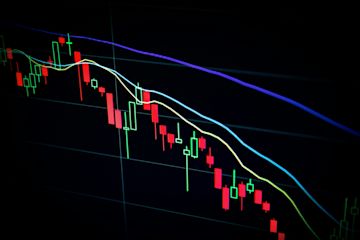
Stagflation: Understanding Its Impact on Stocks and Real Estate
Stagflation occurs when an economy experiences both stagnation (slow economic growth) and inflation (rising prices) simultaneously. This rare but challenging economic phenomenon can significantly impact various investment assets and financial markets.
Understanding Stagflation
Stagflation combines two economic conditions:
- Stagnation: Economic growth slows or stops, leading to higher unemployment and reduced business activity
- Inflation: General price levels rise continuously, decreasing purchasing power and eroding savings

Hands nurturing growing stock investment
Historical Context
The most notable stagflation period occurred during the 1973-74 oil crisis, when:
- OPEC oil embargo caused energy prices to surge
- Global economic growth stalled
- Inflation rates reached double digits in many countries

Woman trading stocks on mountain peak
Causes of Stagflation
Common triggers include:
- Supply shocks (like oil price spikes)
- Poor economic policies
- Structural changes in the economy
- Excessive money supply growth

Red stock market trading chart
Impact on Investment Assets
Stocks:
- Growth stocks typically underperform
- Defensive sectors tend to fare better
- Companies with pricing power may maintain profitability
Gold:
- Often serves as a hedge during stagflation
- Historically performs well when both inflation rises and economic growth slows

Hands nurturing growing stock investment
Real Estate:
- Can provide inflation protection through rising rents
- May struggle due to reduced economic activity
- Property values typically maintain long-term value

Woman trading stocks on mountain peak
Combating Stagflation
Policy responses usually include:
- Supply-side reforms to boost productivity
- Careful monetary policy management
- Structural economic reforms
- Focus on economic stability over growth

Red stock market trading chart
Success in stagflation periods often requires a balanced investment approach, focusing on assets that maintain value during inflation while providing stable income during economic weakness.